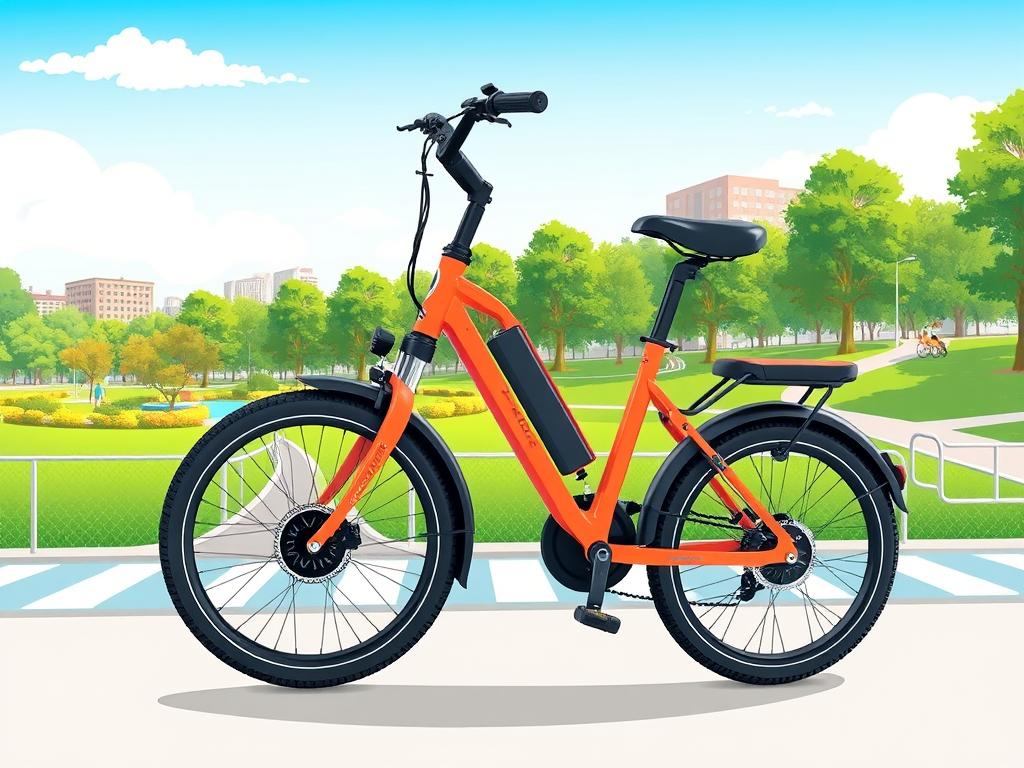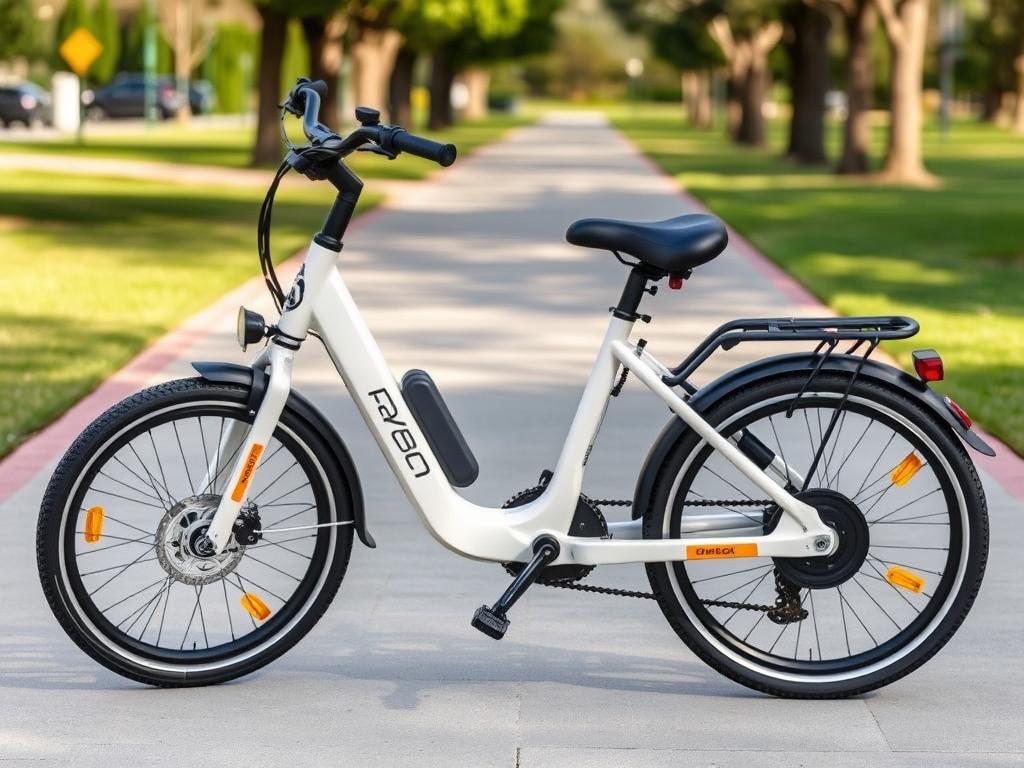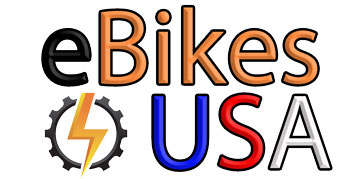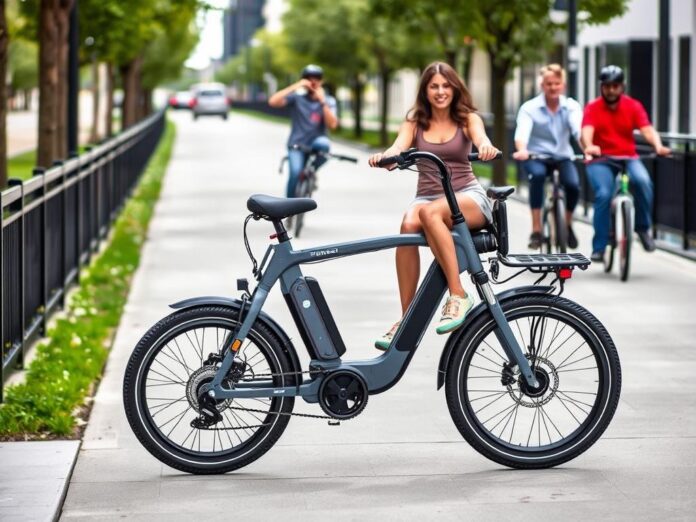If you use an electric bicycle (eBike), knowing the law is key. The Americans with Disabilities Act (ADA) protects your right to use eBikes in public places. This article will help you understand the ADA and your rights as an eBike user.
Key Takeaways
- The ADA lets people with disabilities use eBikes in public areas.
- The ADA divides mobility devices into two groups: wheelchairs and other powered options like eBikes.
- People with disabilities can pick the mobility device that works best for them, including eBikes.
- Places like governments and businesses must follow the ADA’s rules for eBikes.
- Knowing your ADA rights helps you use your eBike freely in public spaces.
Understanding the Americans with Disabilities Act (ADA)
The Americans with Disabilities Act (ADA) is a key civil rights law. It stops discrimination against people with disabilities in public life. This law makes sure everyone, including those with mobility aids like eBikes, has equal chances.
What is the ADA?
The ADA was passed in 1990 to protect disability rights. It ensures equal access to jobs, transportation, and public places. The ADA sets rules to make sure everyone can participate fully in society.
Importance of the ADA in Transportation
The ADA is very important for transportation. It makes sure people with disabilities can use buses, trains, and more. This law helps people with disabilities move around easily and freely.
Scope of the ADA for eBike Users
- The ADA includes many mobility devices, like eBikes, in its coverage.
- Ebike users have the same rights as others using mobility aids. They can access public spaces and transportation.
- The ADA’s rules help eBike users get into places where bikes are allowed. This makes it easier for people with disabilities to get around.

“The ADA has been key in improving the rights and access for people with disabilities. This includes those who use eBikes and other mobility aids to get around.”
Defining ADA-Compliant eBikes
The Americans with Disabilities Act (ADA) is key in defining ADA-compliant eBikes. These eBikes are part of Other Power-Driven Mobility Devices (OPDMDs). They are made for people with mobility issues to move around indoors or outdoors.
Key Features of ADA-Compliant eBikes
ADA-compliant eBikes have special features for safety and accessibility. These include:
- Adjustable speed controls for different needs
- Stability features like wider tires
- Modifications for adjustable seats and handlebars
Types of eBikes in Compliance
There are three main classes of eBikes that can be ADA-compliant:
- Class 1 eBikes: Pedal-assist with a 20 mph top speed
- Class 2 eBikes: Throttle-assisted with a 20 mph top speed
- Class 3 eBikes: Pedal-assist with a 28 mph top speed
These classes ensure eBikes meet safety and mobility standards. States also have their own rules to further define these standards.
Considerations for Modifications
When modifying an eBike for ADA compliance, safety and mobility are key. The eBike must be stable and easy to use. It must also follow eBike regulations, mobility device standards, and electric bicycle compliance rules.
“The key to ADA-compliant eBikes is balancing accessibility, safety, and regulatory compliance to empower individuals with mobility challenges to navigate their surroundings with confidence.”
Rights and Protections Under the ADA
If you use an eBike and have a disability, the ADA has your back. It makes sure people with disabilities can get to public places, facilities, and ways to travel. You can ride your eBike in places usually for bikes, unless it’s not safe.
Your Rights as an eBike User
The ADA lets you ride your eBike in public spots like parks and sidewalks. Businesses and public places must make room for eBikes. They can only say no if your eBike is really dangerous.
Employer and Public Entity Obligations
Places open to the public must let people with disabilities use their eBikes. They check if the eBike is okay to use. They look at its size, weight, and how it works.
Legal Recourse for Violations
If you face unfair treatment because of your eBike, you can fight back. You can complain to the Department of Justice or sue privately. Knowing your rights helps you get where you need to go.

“The ADA ensures that individuals with disabilities have the same opportunities as everyone else to participate in the mainstream of American life – to enjoy employment opportunities, to purchase goods and services, and to participate in State and local government programs and services.” – United States Department of Justice
Accessibility Requirements for eBikes
As electric bicycles (eBikes) become more popular, it’s key to make sure they meet accessibility laws and mobility device standards for people with disabilities. The design of eBikes is crucial for making transportation accessible and inclusive for everyone.
Design Standards for ADA Compliance
eBikes need to follow certain design standards to meet the Americans with Disabilities Act (ADA). They must have adjustable seats, strong frames, and controls that are easy to use. This makes sure eBikes are accessible and easy to use for people with physical disabilities.
Loading and Unloading Considerations
Being able to easily load and unload eBikes is also important. People with disabilities should be able to take their eBikes on public transport, into buildings, and into cars. It’s important for manufacturers and public places to work together to make eBikes easy to use in all situations.
Maintenance of Accessibility Features
Keeping eBikes accessible is vital for their long-term use. Regular checks, quick repairs, and maintenance are needed to keep eBikes up to standard. Both makers and users have to work together to keep eBikes accessible for everyone.
| Feature | Accessibility Requirement | Benefit |
|---|---|---|
| Adjustable Seat Height | Allows for easy mounting and dismounting | Enhances usability for riders with limited mobility |
| Sturdy Frame | Provides a stable and secure riding experience | Ensures safety and confidence for riders with physical disabilities |
| Intuitive Controls | Easy-to-use buttons, switches, and display | Facilitates independent operation for riders with dexterity challenges |

“Ensuring the accessibility of eBikes is not just about compliance – it’s about empowering individuals with disabilities and promoting inclusive transportation options.”
State and Local Regulations Impacting eBikes
The Americans with Disabilities Act (ADA) protects eBike users at the federal level. But, state and local laws can change how you use these vehicles. It’s key for riders, especially those with disabilities, to know the laws in their area.
Variations in State ADA Regulations
Even though the ADA has national standards, states can add their own rules. For example, state eBike laws might set speed limits or age rules for different types of eBikes. Knowing your state’s ADA rules is vital to follow the law and avoid trouble.
Local Laws and Ordinances to Consider
Local rules can also affect eBike use, especially in public places. Cities and towns have their own rules on eBike speeds, where you can ride, and more. It’s important to know the local ADA regulations to ride safely and legally.
Importance of Compliance with Local Guidelines
Following state and local laws is crucial for legal and safety reasons. Not following compliance guidelines can lead to fines or losing your right to use an eBike in some places. By following the rules, eBike users can enjoy their rides while keeping everyone safe.
| State | eBike Regulations | Local Ordinances |
|---|---|---|
| California |
|
|
| Oregon |
|
|
“Compliance with local guidelines is essential to avoid potential legal issues and ensure safe, lawful operation of ADA-compliant eBikes.”
eBikes and Public Spaces
The Americans with Disabilities Act (ADA) says public spaces must let eBikes in for people with disabilities. But, there are rules for safety reasons. It’s important to know the rules for eBikes in public to make sure everyone can use them safely.
Access to Parks and Recreational Areas
Parks and places for fun must let eBikes in, unless they’re a danger. The law says eBikes can go up to 20 mph and have a 750-watt motor. Over 30 states follow these eBike restrictions and sort eBikes by speed and how they work.
Navigating Public Transportation with eBikes
Public transport also needs to let eBikes in, but the rules for where to put them vary. Riders must show their eBike is for getting around. Some places, like New York, make you register certain eBikes, while others don’t need a special license.
“The Department of the Interior’s 2022 secretarial order lets most eBikes on trails where bikes are okay, changing rules for national parks and forest trails. But, how it’s done can differ and might need a permit in some spots.”
Understanding the rules for eBikes in public places is key. Knowing your rights and duties helps eBike users get where they need to go safely and legally.
Responsibilities of eBike Manufacturers
The eBike industry is growing fast. Manufacturers must make sure their bikes are safe and easy for everyone to use. They need to follow the Americans with Disabilities Act (ADA) to make bikes for people with disabilities.
Compliance Obligations for Manufacturers
eBike makers must keep up with ADA rules. They need to design bikes that are light, easy to control, and simple to use. If they don’t, they could face legal problems and make bikes hard for some people to use.
Importance of User Information and Warranties
It’s key for eBike makers to give users all the info they need. They should tell people how to use and care for their bikes. Also, strong warranties show they care about making good products.
Liability and Safety Regulations
eBike makers have to watch out for legal issues and follow safety rules. Laws like the Consumer Product Safety Act set limits on how fast and powerful eBikes can be. If they don’t follow these rules, they could face legal trouble and lose people’s trust.
| eBike Manufacturing Standards | Safety Regulations | Product Liability |
|---|---|---|
|
|
|
By focusing on following rules, teaching users, and making bikes safe, eBike makers show they care. They make sure bikes are fun and accessible for everyone, no matter their abilities.
Future of ADA Compliance and eBikes
The future of ADA compliance for eBikes looks bright. New eBike tech is making these vehicles more accessible for people with disabilities. Advocacy groups and new laws are working together to make our transportation system more inclusive.
Emerging Trends in eBike Technology
The eBike world is changing fast. New batteries, lighter materials, and better features for people with disabilities are leading the way. These changes mean eBikes could soon be a big part of our lives, helping everyone get around.
Expected Changes in Legislation
Lawmakers are keeping a close eye on eBikes. They want to make sure everyone, including those with disabilities, is safe and respected. Soon, we’ll see new rules that help eBikes fit into our communities better.
Role of Advocacy Groups in Promoting Compliance
Groups fighting for disability rights are key in making eBikes more accessible. They work with lawmakers and others to make sure eBikes are safe and useful for everyone. Their efforts help make sure eBikes are a part of a fair and open transportation system.
The future of eBikes is exciting. With new tech, laws, and advocacy, we’re moving towards a world where everyone can use eBikes. This change will make our transportation system better for everyone, creating a more inclusive future.
Resources for ADA-Compliant eBike Users
If you use an eBike and follow the Americans with Disabilities Act (ADA), you have many resources to help. These include federal and state websites, non-profit groups, and online tools. They can help you understand your rights and find support.
Federal and State Resources
The Department of Justice’s ADA website (ada.gov) is a great place to start. It offers lots of information on ADA rules and your legal rights. The U.S. Access Board (access-board.gov) also has detailed info on eBike accessibility standards.
At the state level, many places have offices for disability rights. They can help you understand local laws and rules.
Non-Profits and Advocacy Organizations
Groups like the National Disability Rights Network are key in fighting for disability rights. They offer support, resources, and legal help. This can make sure your eBike use is accessible and follows ADA rules.
Online Tools for Understanding Your Rights
The ADA National Network (adata.org) is a top online resource. It has lots of info on ADA rules, accessibility, and court cases. Using these tools can help you know your rights and ensure your eBike use meets the law.






